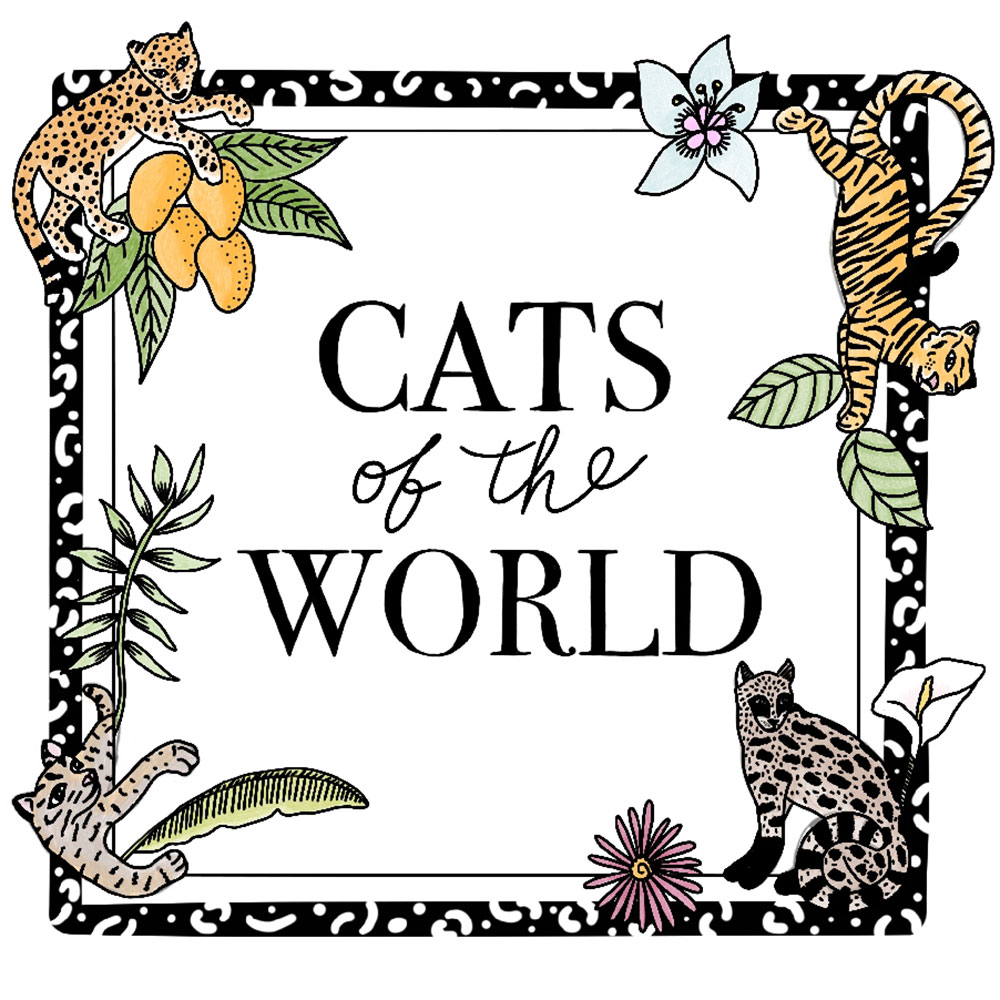By Louise Irvine
One of the highlights of Safari for the Soul, our new Ardmore selling exhibition at WMODA, is all the cats of the world portrayed by the Ardmore artists. We are exploring the plight of these fierce and fragile creatures, many of which are critically endangered, threatened by the illegal wildlife trade, and by increasing habitat destruction. The most imperiled cats include leopards, cheetahs and lions from Africa, tigers from Asia, and jaguars and pumas from the Americas.
Leopard
Zulus consider the leopard to be the king of the cats, symbolizing nobility, courage, and honor. Leopard skin is in great demand for ceremonial regalia. Despite their regal status, leopards are the world’s most persecuted wild cat and they have vanished from two-thirds of their historic range in Africa. The clusters of black and brown spots are known as rosettes and each leopard has a unique pattern, just like our fingerprints. Their coats provide camouflage as they stalk their prey in the tall grass. Their bulky strength allows them to drag their kill up into the trees where they feed at leisure.
Clouded Leopard
Despite its name, the Clouded Leopard is not a type of leopard but a separate species of wild cat. It is medium-sized and lives in forested areas in South East Asia, from the Himalayan foothills to southern China. The Clouded Leopard population is declining rapidly, and it is listed as vulnerable.
Cheetah
Cheetahs are the planet’s fastest land animal, and they rely on bursts of speed to hunt. Even this top predator is at risk in today’s environment from the illegal bushmeat trade and poorly managed trophy hunting. Cheetahs have solid black round or oval spots and black "tear lines" that run from the corner of their eyes. Unlike leopards and other big cats, they can purr while they inhale, but cannot roar.
King Cheetah
The King Cheetah is one of the rarest animals in the world as only ten are believed to exist in the wild, with a further 50 in captivity. The last confirmed wild sighting was in Kruger National Park in 1986. The fur of the King Cheetah is darker and thicker, and the blotchy striped pattern is mutated due to a recessive gene.
Lion
Lions symbolize power and strength, but it is a misconception that these majestic cats are the kings of the jungle as they live in the grassy savannas of Africa, not in the rainforest. Lions hunt in packs, not alone like other wild cats, and they prey on grazing animals like zebras and gazelles. Their roar can be heard up to 5 miles away. Lions are experiencing loss of habitat and conflict with humans due to the commercialization of livestock ranching and agriculture. It is now extinct in 26 African countries and has vanished from 95% of its historic range.
Tiger
The tiger is the largest of the big cats and the closest to extinction. A century ago, more than 100,000 wild tigers roamed across Asia. Now there are less than 4,000. One of the world’s most famous paintings of a tiger by Henri Rousseau was an inspiration for Ardmore’s Travelers of Africa series. In 1973, Indira Gandhi, the Indian Prime Minister, established Project Tiger, which banned hunting and trading in tiger skins. However, tigers are still threatened with poaching by the illegal wildlife trade and human-tiger conflict including loss of habitat.
Jaguar
The jaguar is the largest wild cat in the western hemisphere and has experienced greater success at living with humans, despite conflict over prey and habitat loss. They exist in 18 countries in Latin America from Mexico to Argentina. Black panthers can either be jaguars or leopards. They gain their black fur through a natural and hereditary pigment. Like leopards, their fur is marked with rosettes, which are larger with a black spot at the center.
Panther
The panther is also known as the cougar, puma, and mountain lion and it lives in 28 countries in the Americas from Alaska to the southern tip of Chile. In conservation circles, they are listed as the wild cat species of least concern although they are threatened by habitat loss. They have disappeared from the eastern half of the USA except for a tiny population in Florida. The Florida panther lives in pinelands, tropical hardwood hammocks, and swamp forests of the Everglades. It was chosen as the Florida state animal in 1982.
Bobcats
Bobcats are the most widely distributed wild cats in North America as they are adaptable to many environments, including deserts, swamps, forests, and even urban areas. On average, bobcats are about twice the size of a domestic cat and they are often confused with the cubs of mountain lions. They get their name from their short bobbed tail which can be up to six inches long. Given their wide distribution, they are not considered an endangered species.
Panthera
Panthera, the global wild cat conservation organization, develops and implements strategies for the conservation of the world’s 40 species of wild cats and their ecosystems. Representing the most comprehensive effort of its kind, Panthera partners with local and international NGOs, scientific institutions, local communities, governments around the globe, and citizens who want to help ensure a future for wild cats.
Read more...
A Safari for the Soul Exhibition
All the pieces illustrated in this article are for sale on a first come first served basis. They will be removed from the exhibition when purchased. Call 954.376.6690 for details.
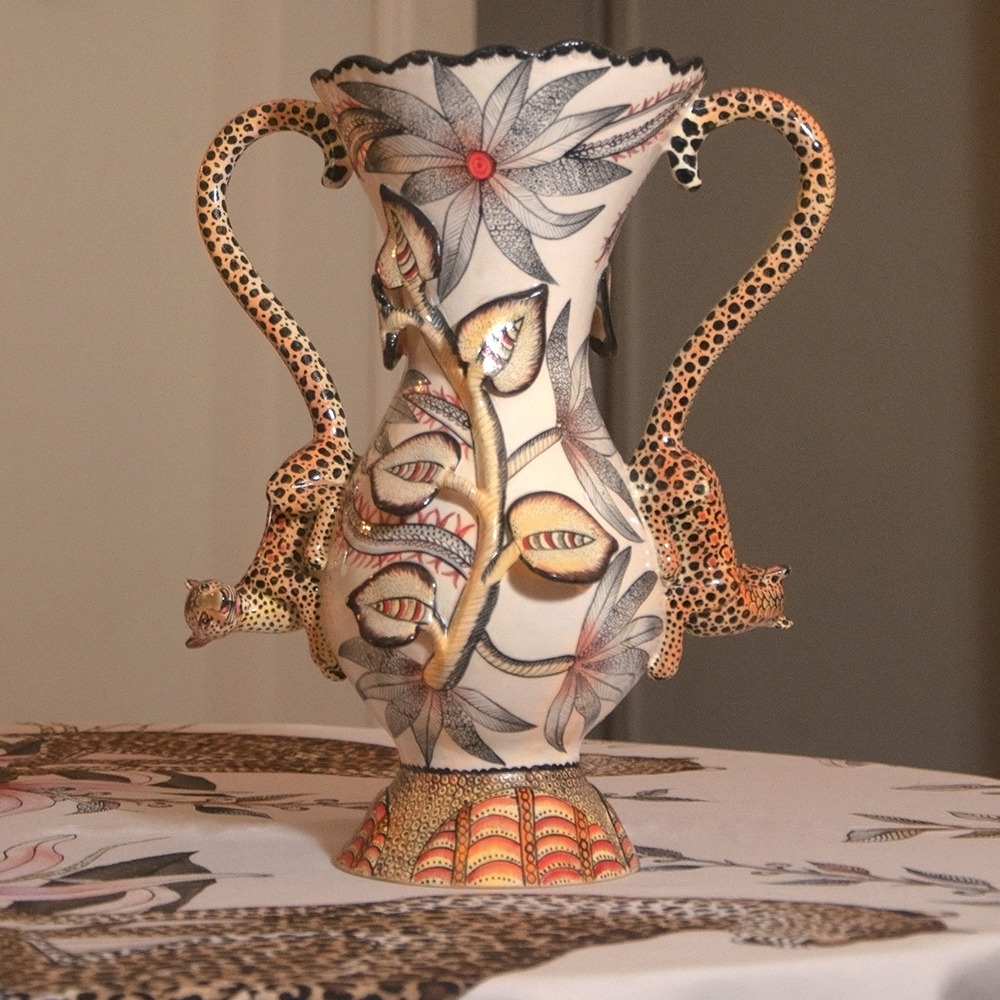
Ardmore Leopard Vase by Octavia & Riyah
Height 12.5 inches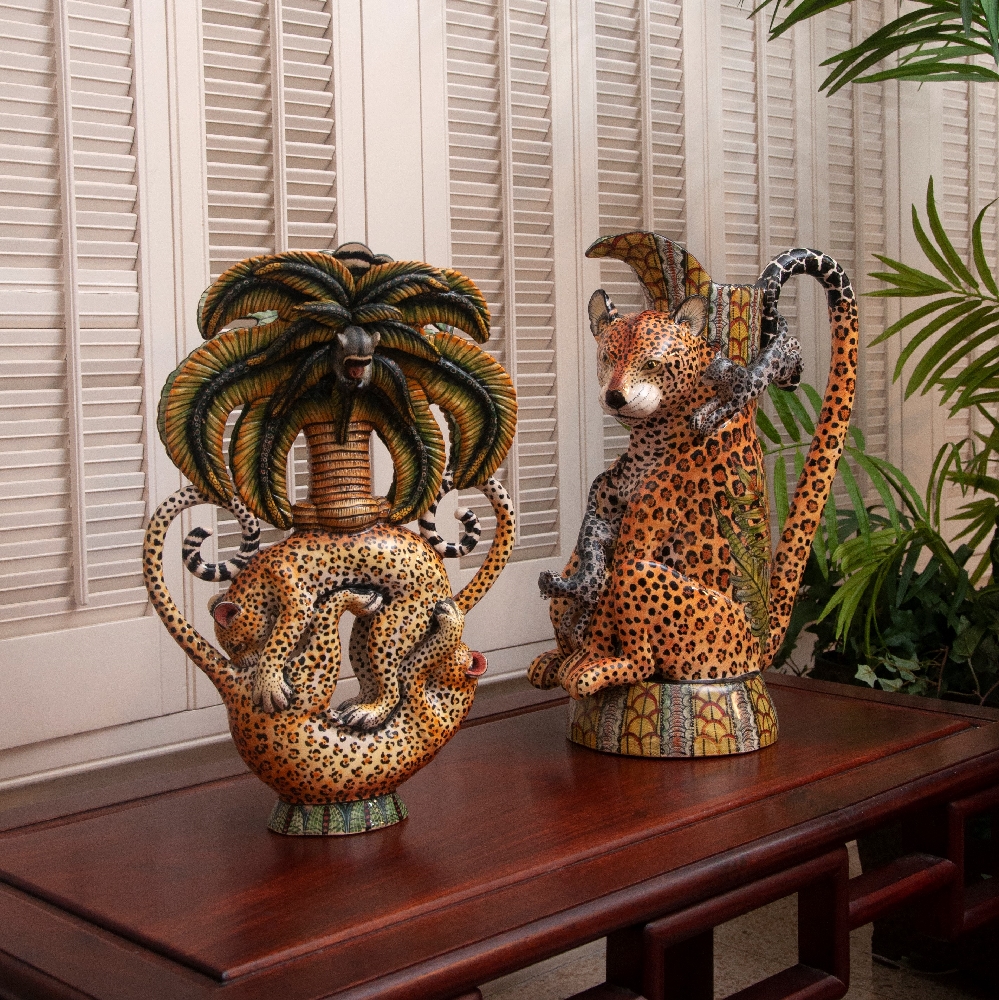
Ardmore Leopard by Thulani & Wiseman
Height 15.5 inches
Leopard Jug by Abraham & Mbusi
Height 17 inches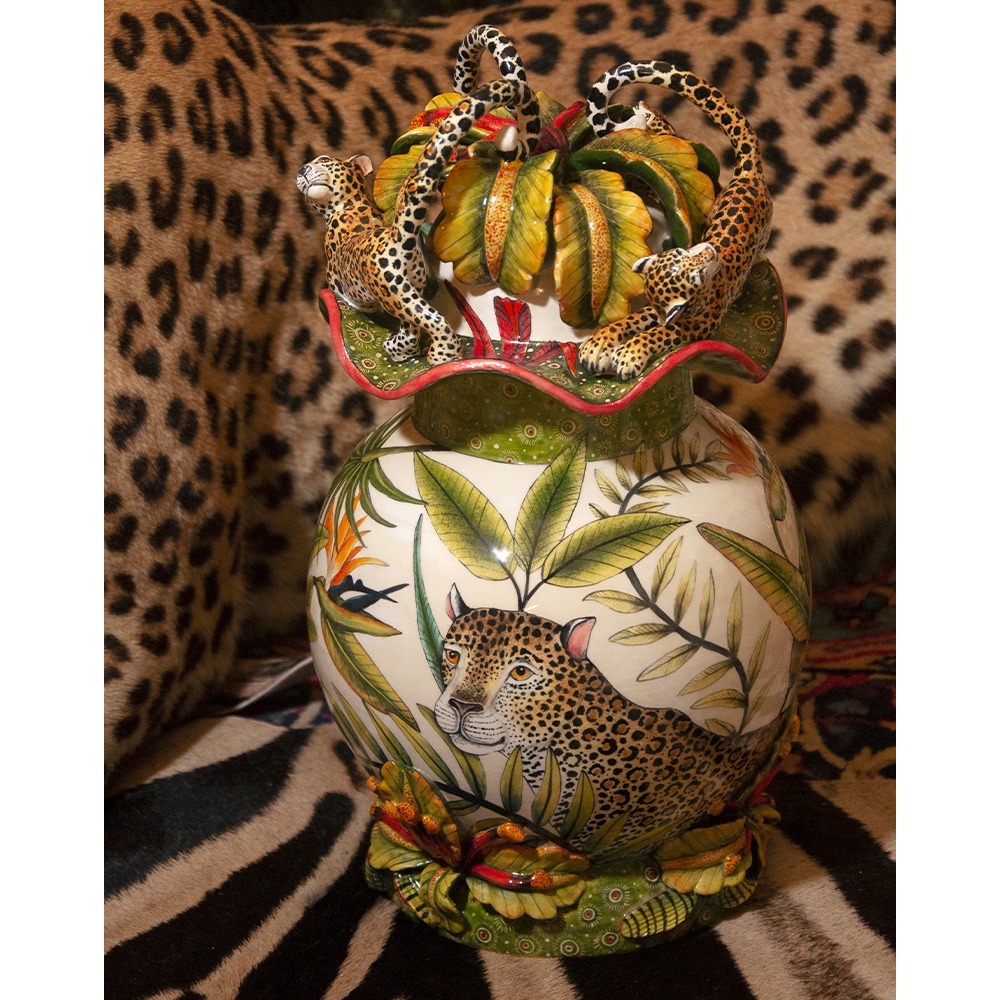
Ardmore Leopard Molapo & Sbongile
Height 16 inches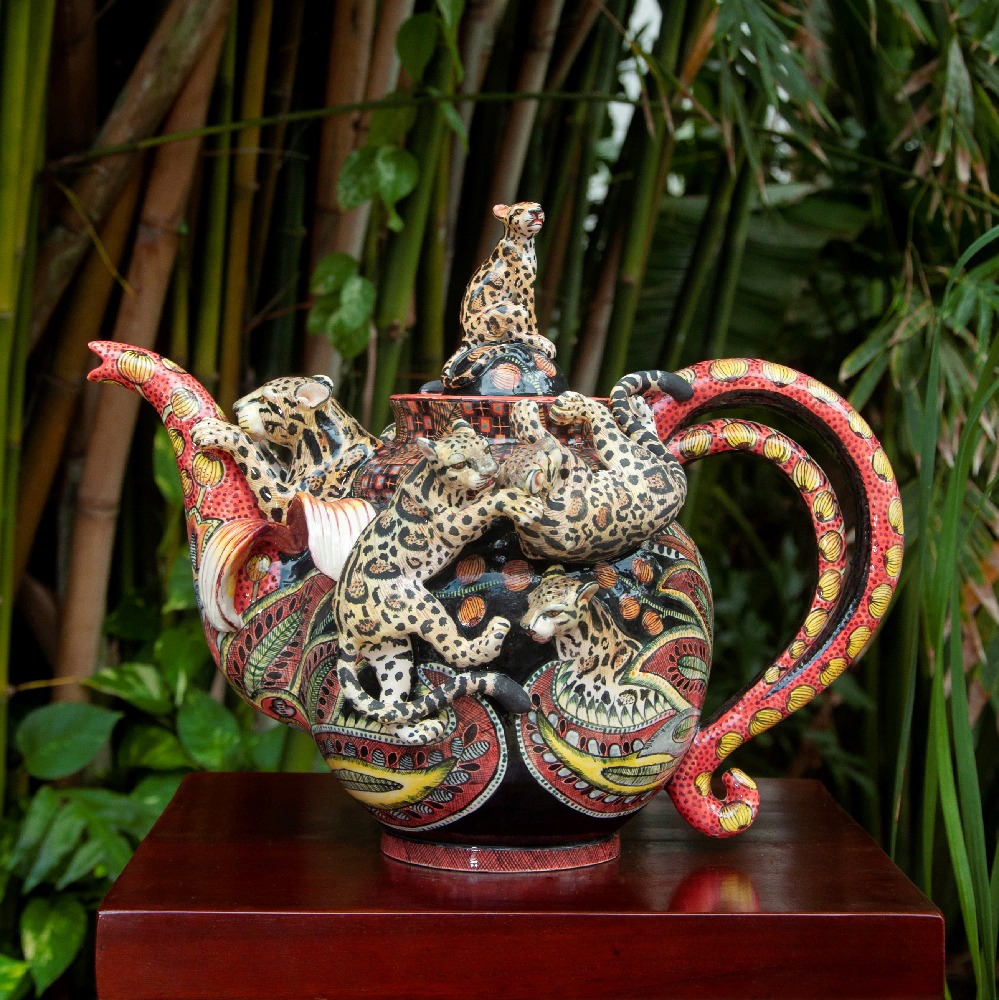
Ardmore Clouded Leopards Qiniso & Zinhle
Height 17 inches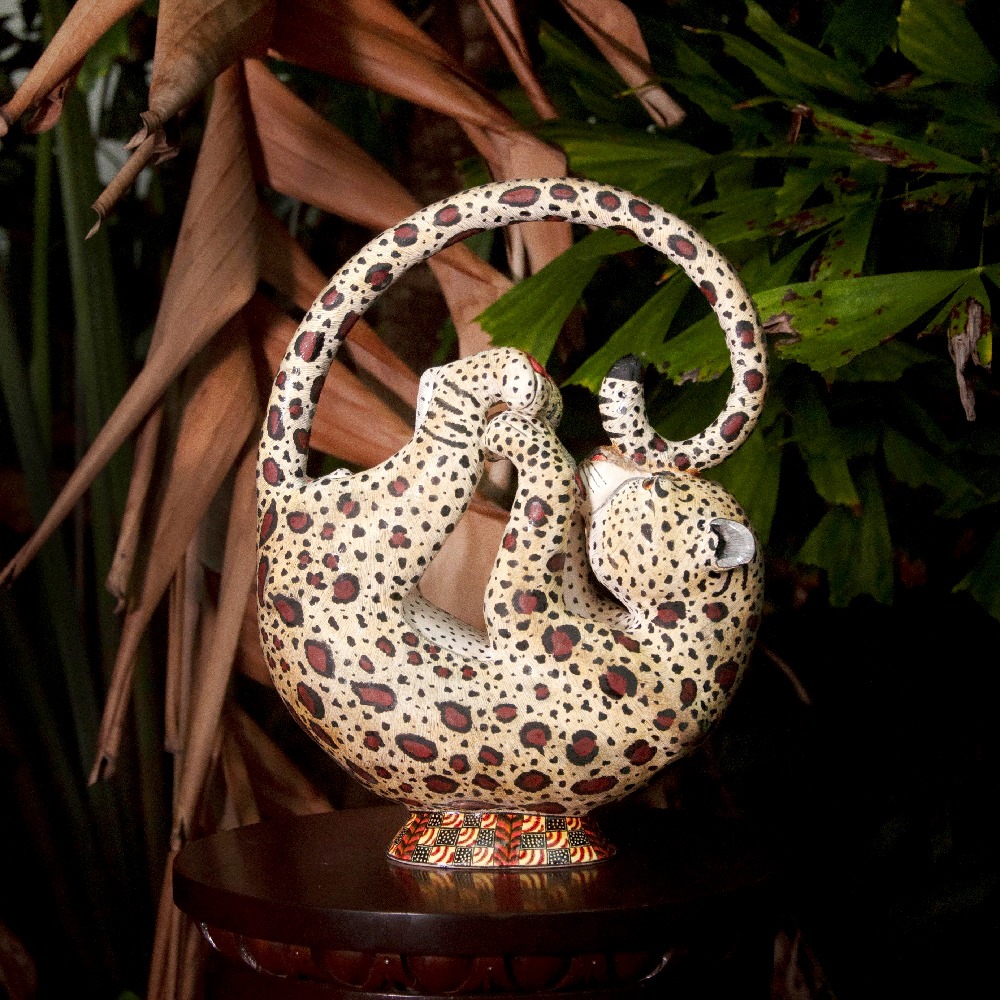
Ardmore Clouded Leopard Thulani & Nondumiso
Height 14 inches
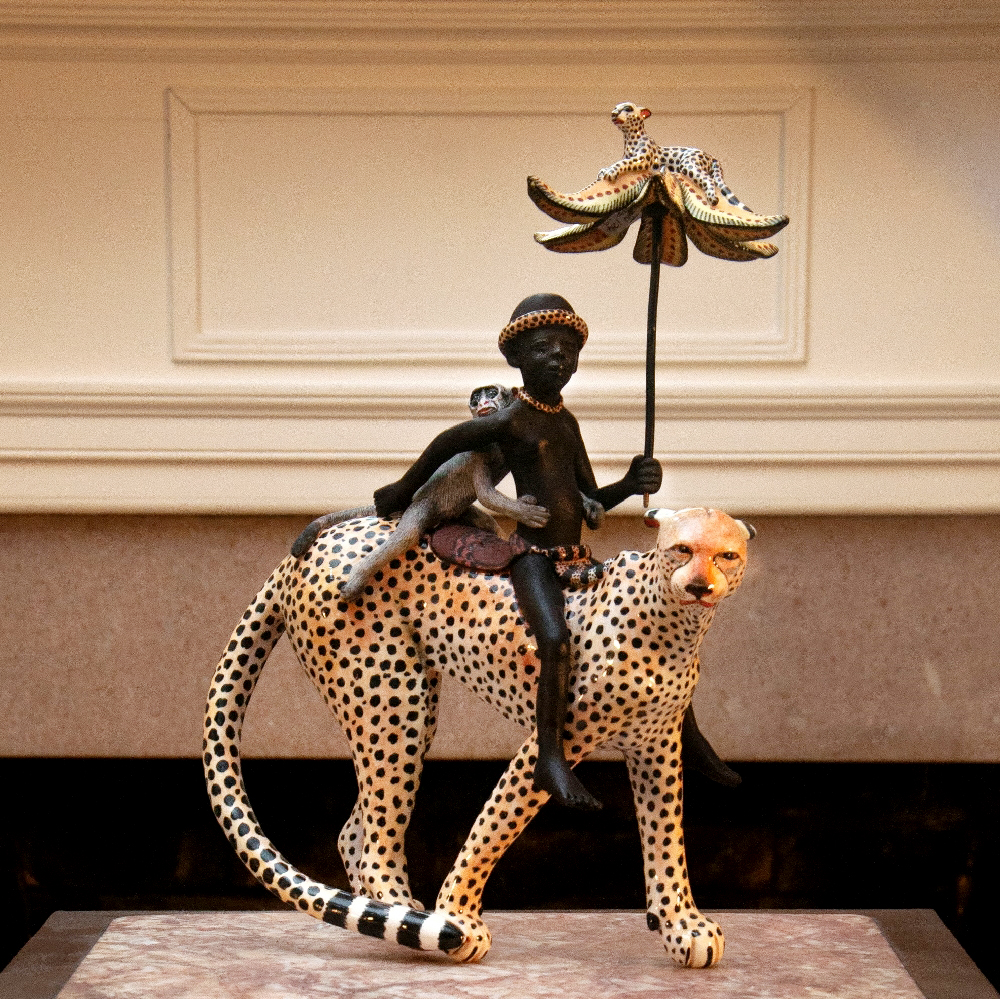
Ardmore Cheetah by Bennet & Jabu
Height 15 inches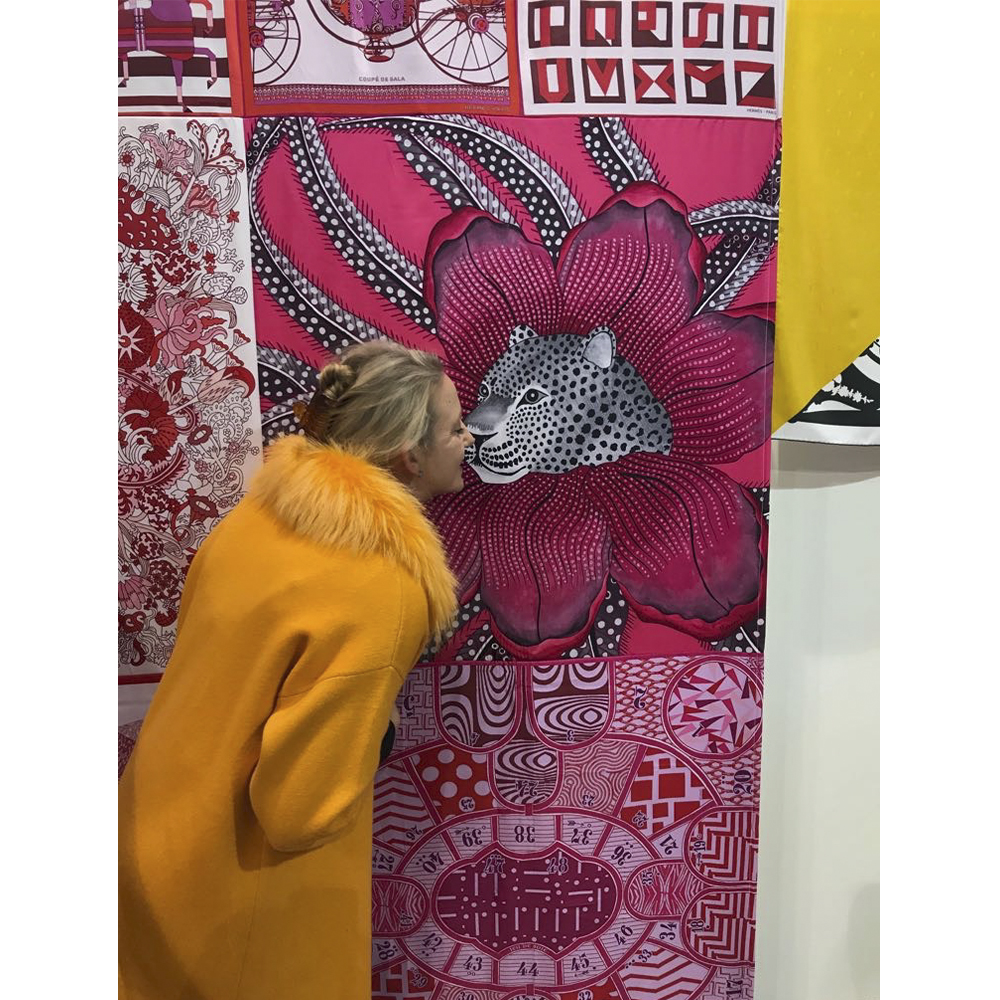
Catherine Berning Ardmore designer with Hermes scarf
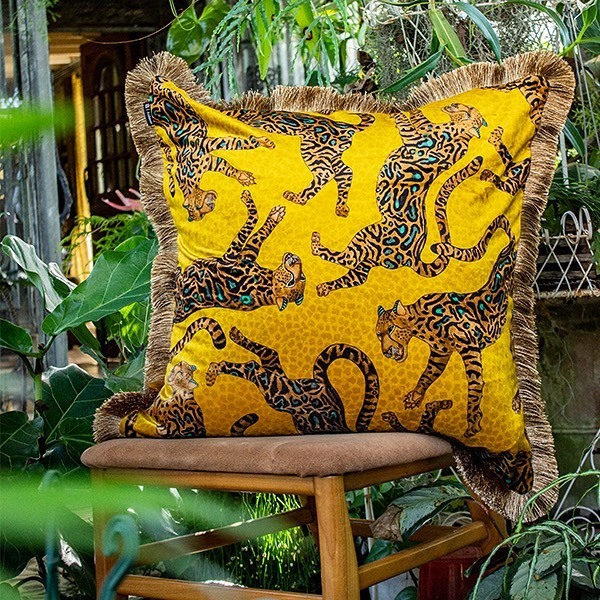
Ardmore King Cheetah Cushion
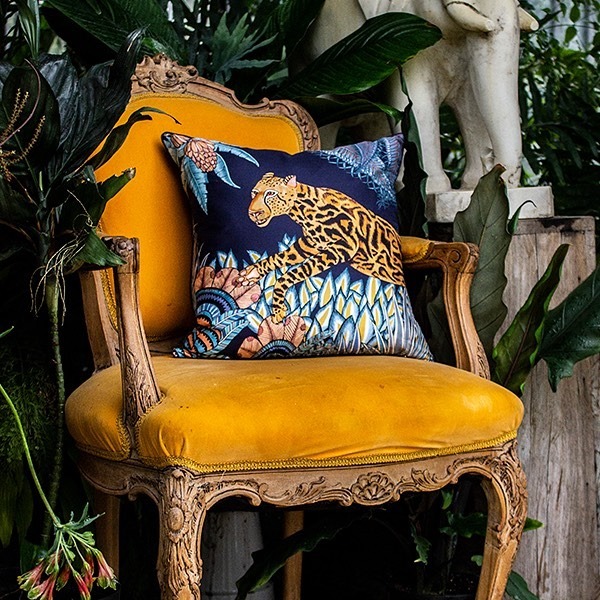
Ardmore King Cheetah Cushion
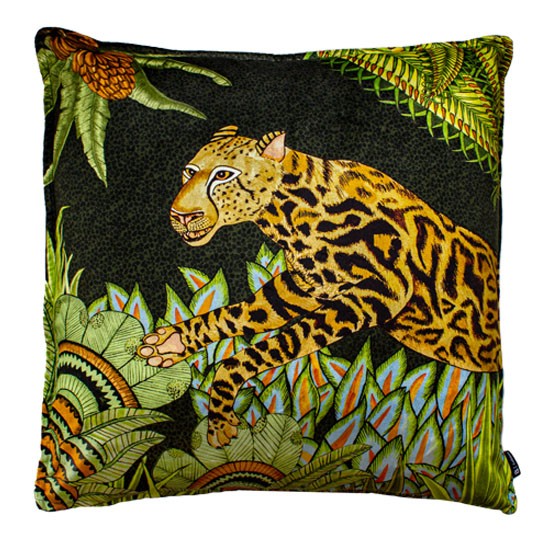
Ardmore King Cheetah Cushion
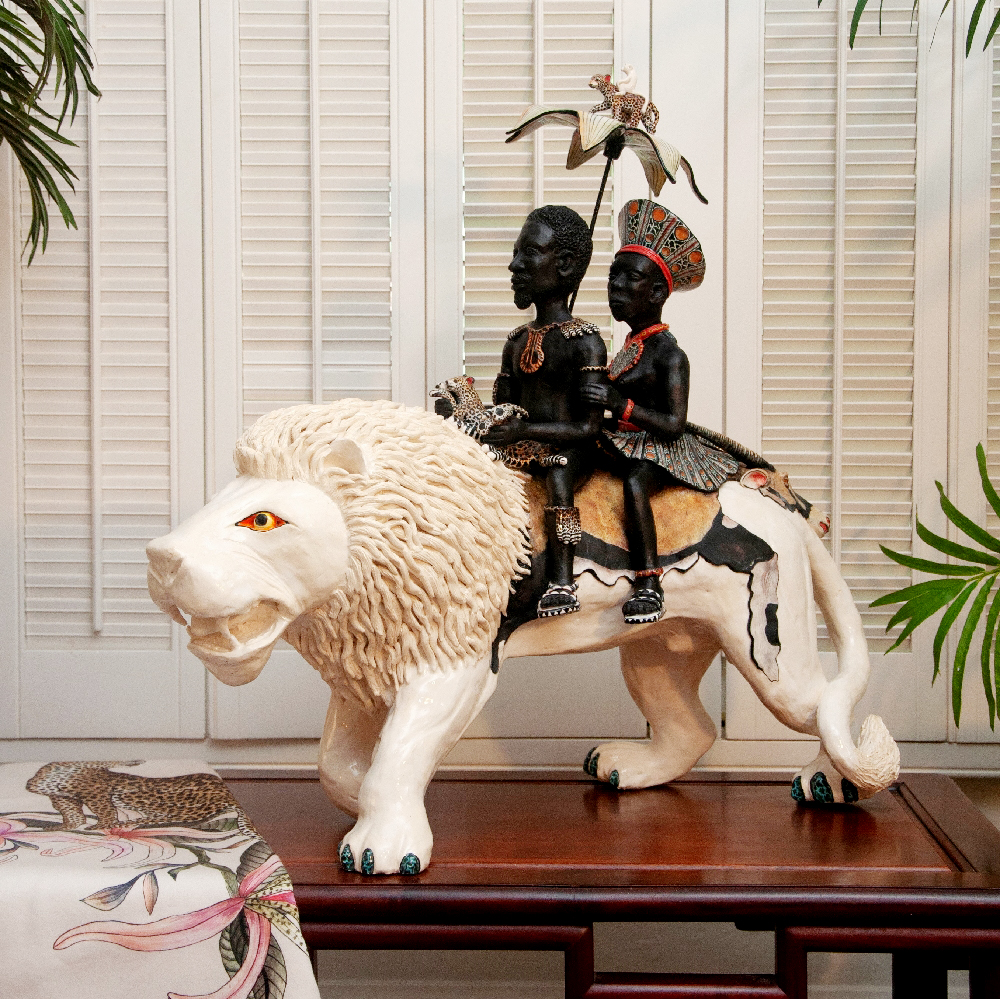
Ardmore Lion by Qiniso & Thobani
Height 27.5 inches
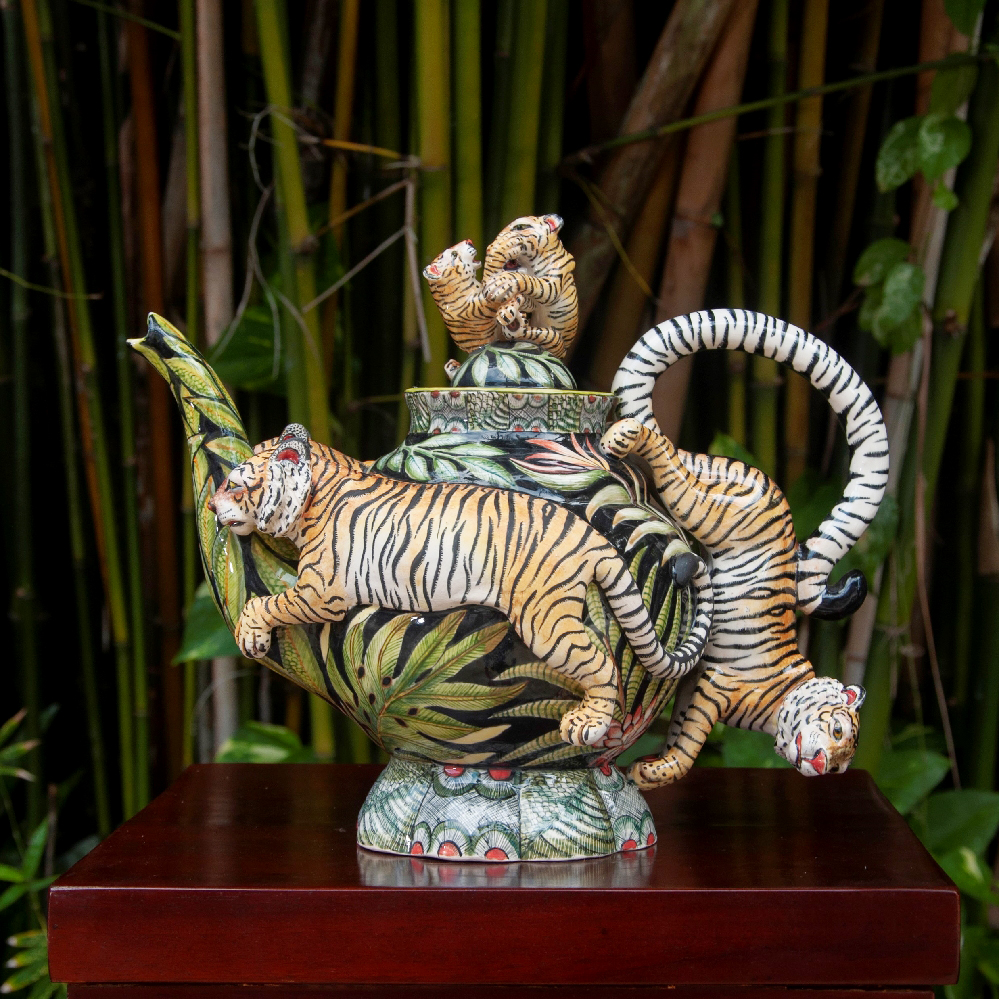
Ardmore Tiger teapot by Qiniso & Rosemary
Height 12.5 inches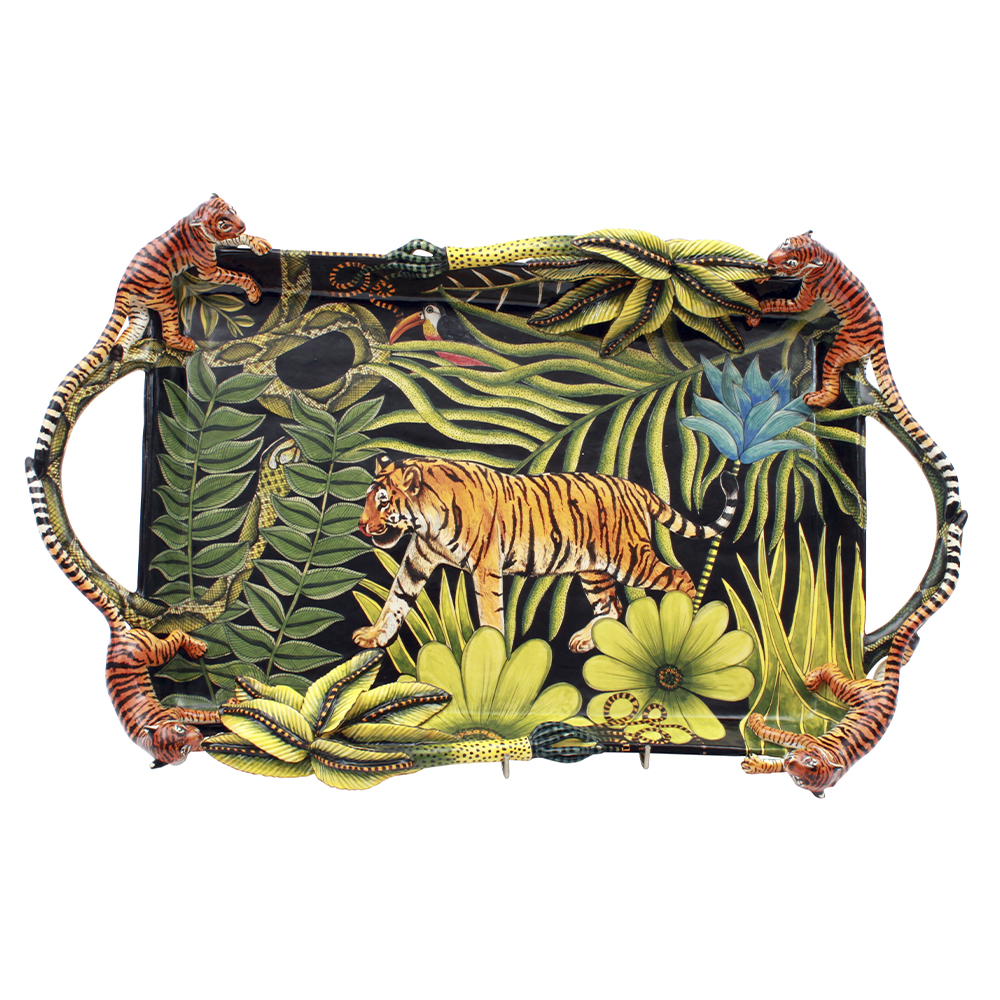
Ardmore Tiger tray by Kenneth & Wiseman
Length 22 inches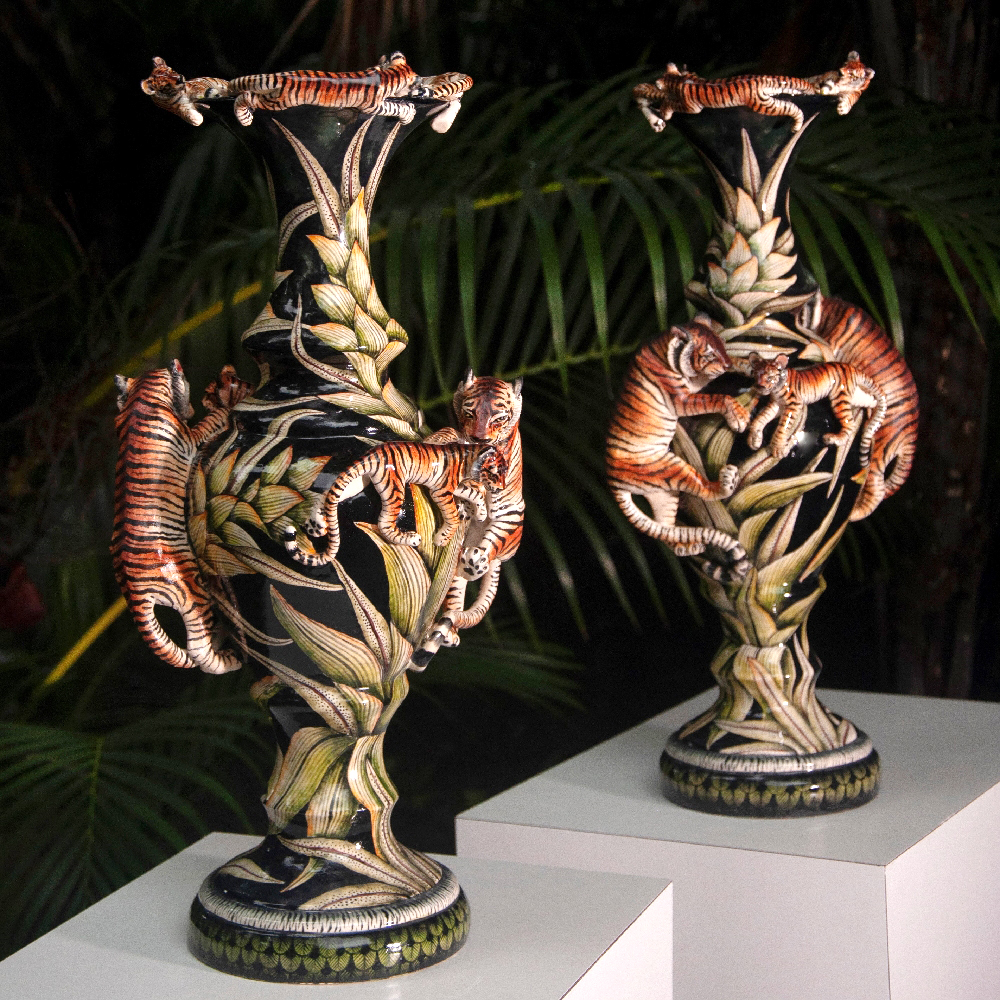
Ardmore Tiger candleholders by Qiniso & Mandla-Enkosi
Height 19.5 inches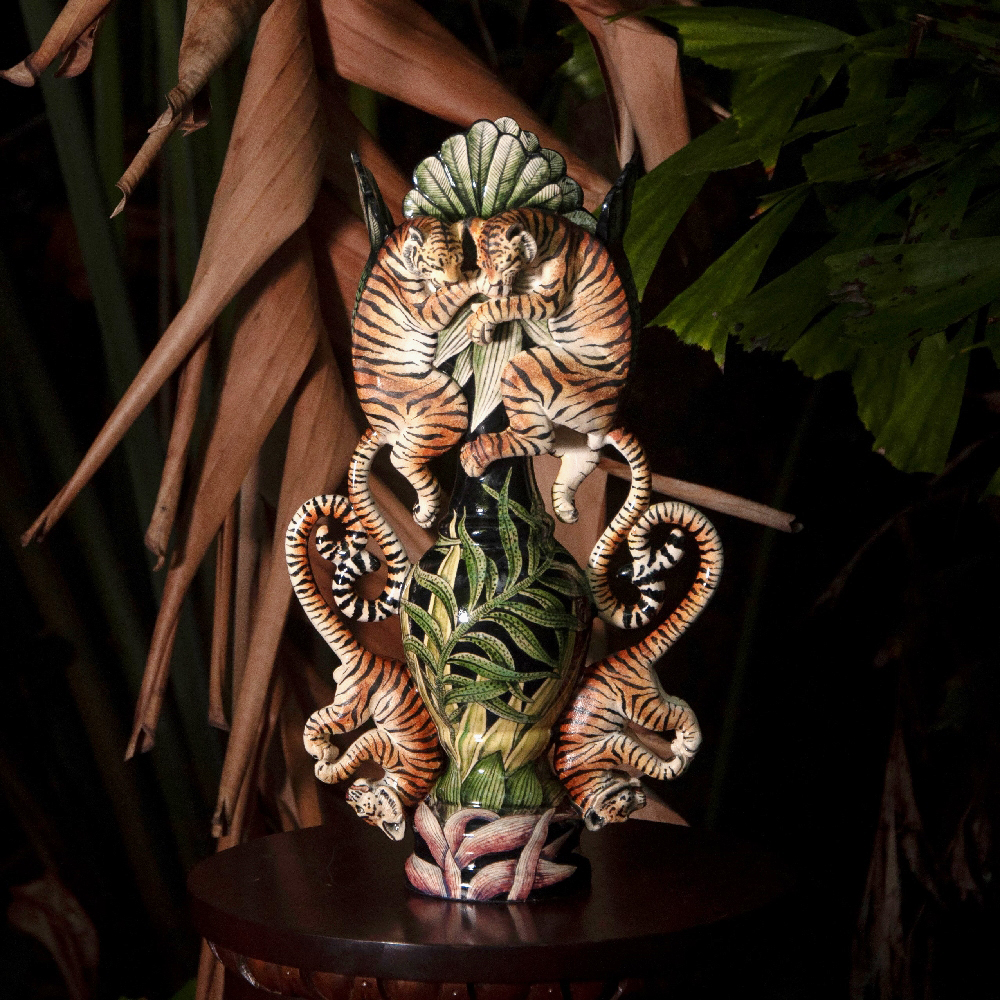
Ardmore Tiger vase by Thulani & Mandla-Enkosi
Height 16.5 inches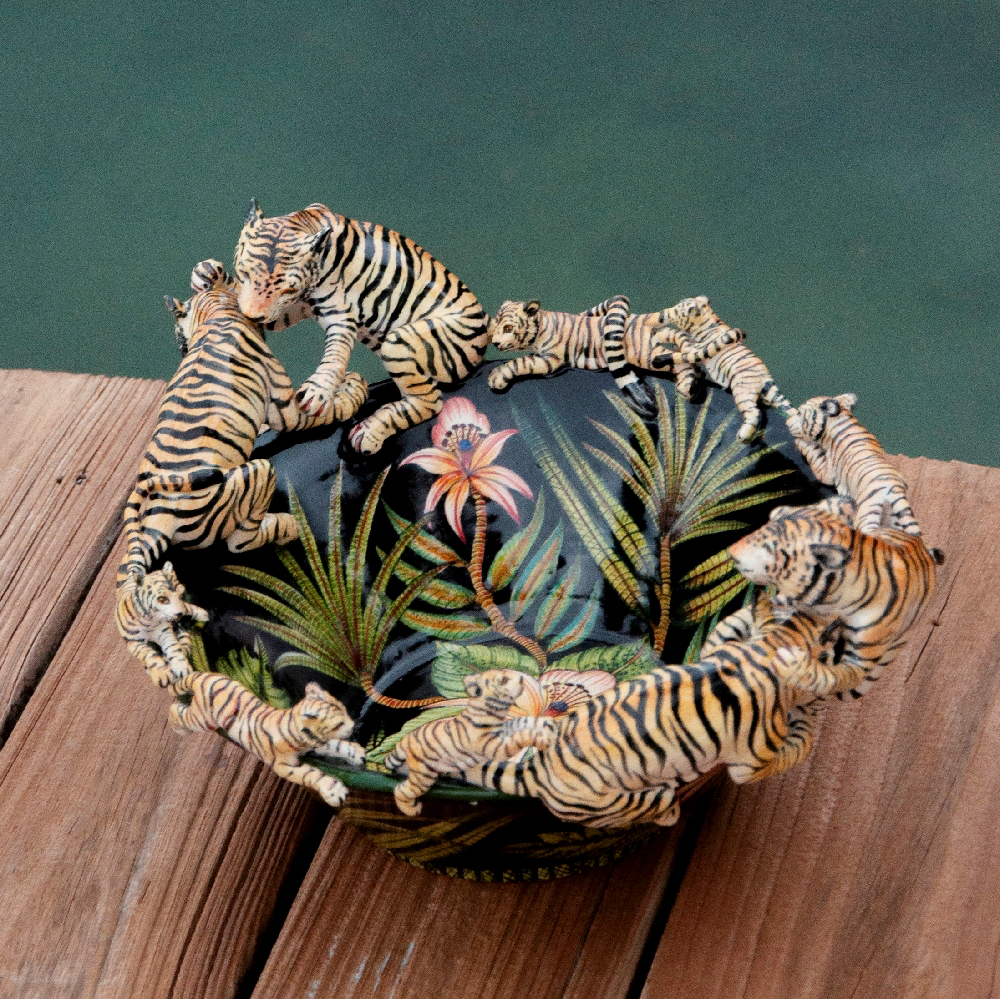
Ardmore Tiger bowl by Qiniso & Elvis
Width 12.5 inches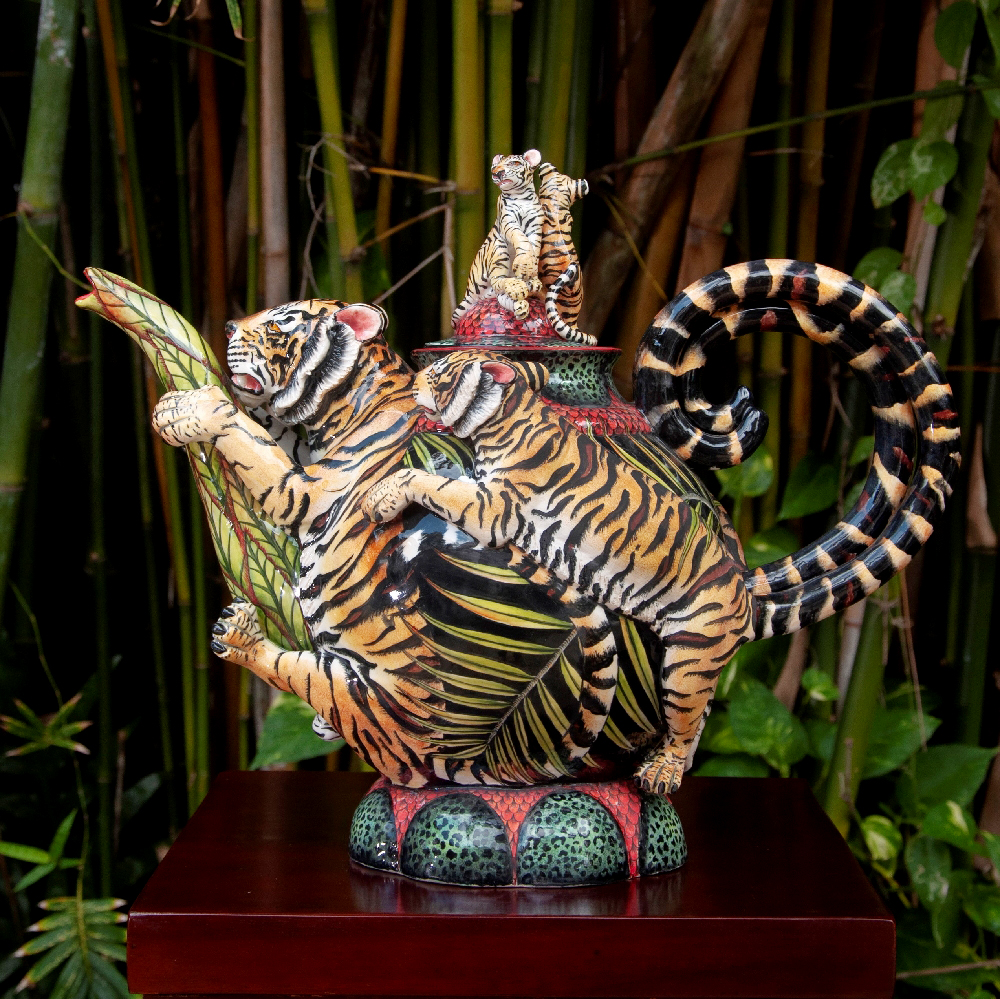
Ardmore Tiger teapot by Thabo & Mbusi
Width 19 inches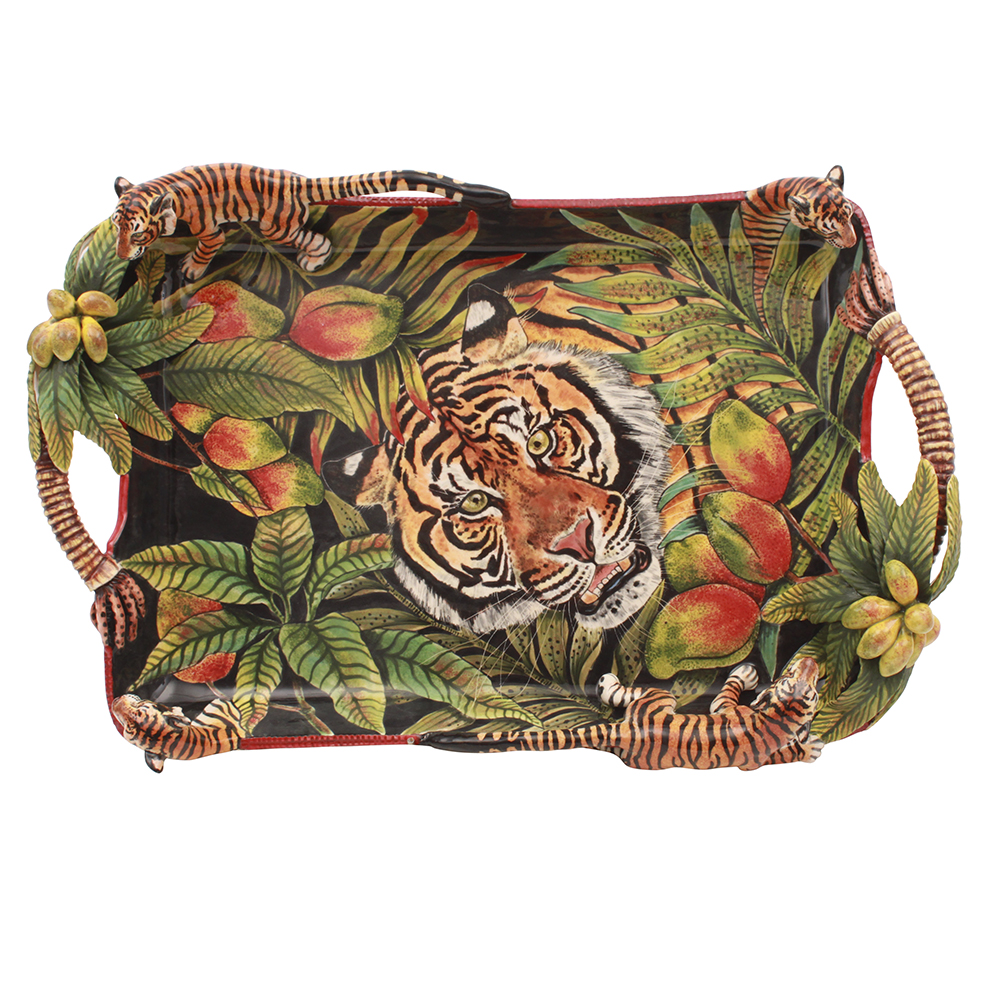
Ardmore Tiger tray
Width 17 inches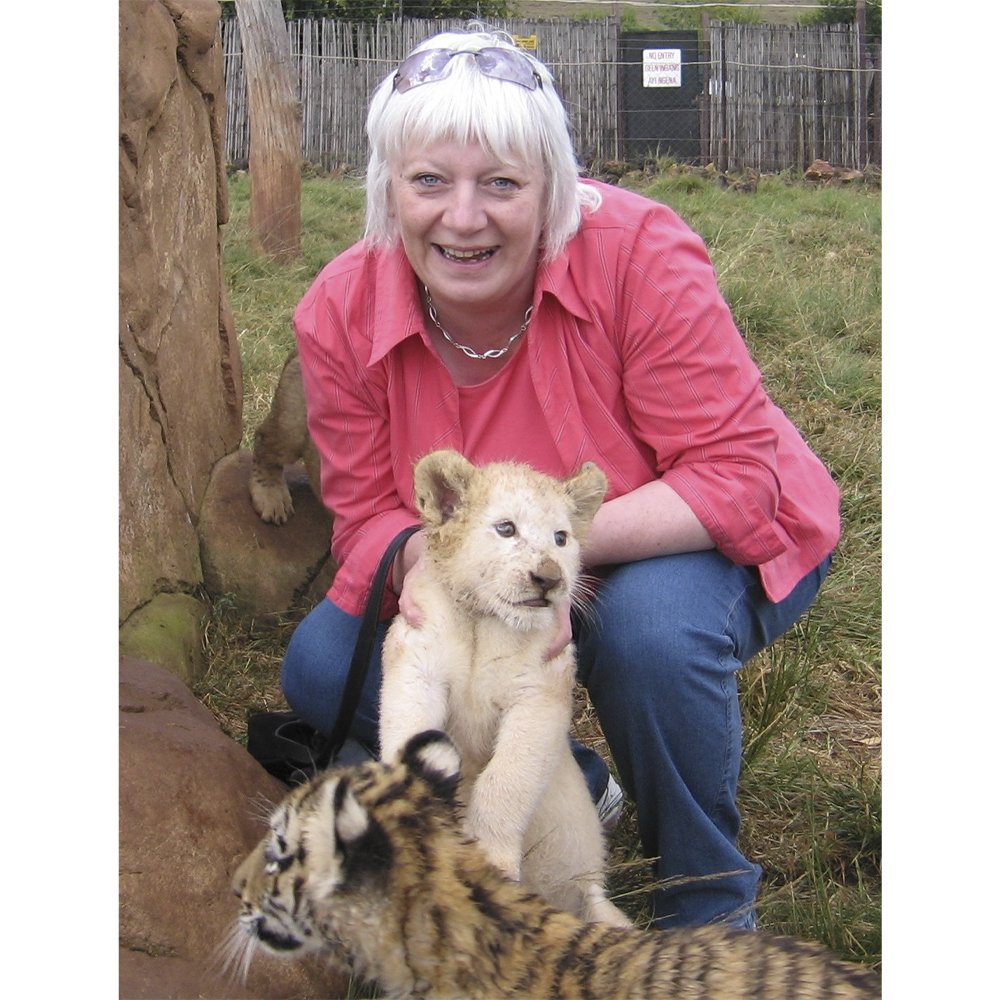
Louise playing with lion and tiger cubs in South Africa
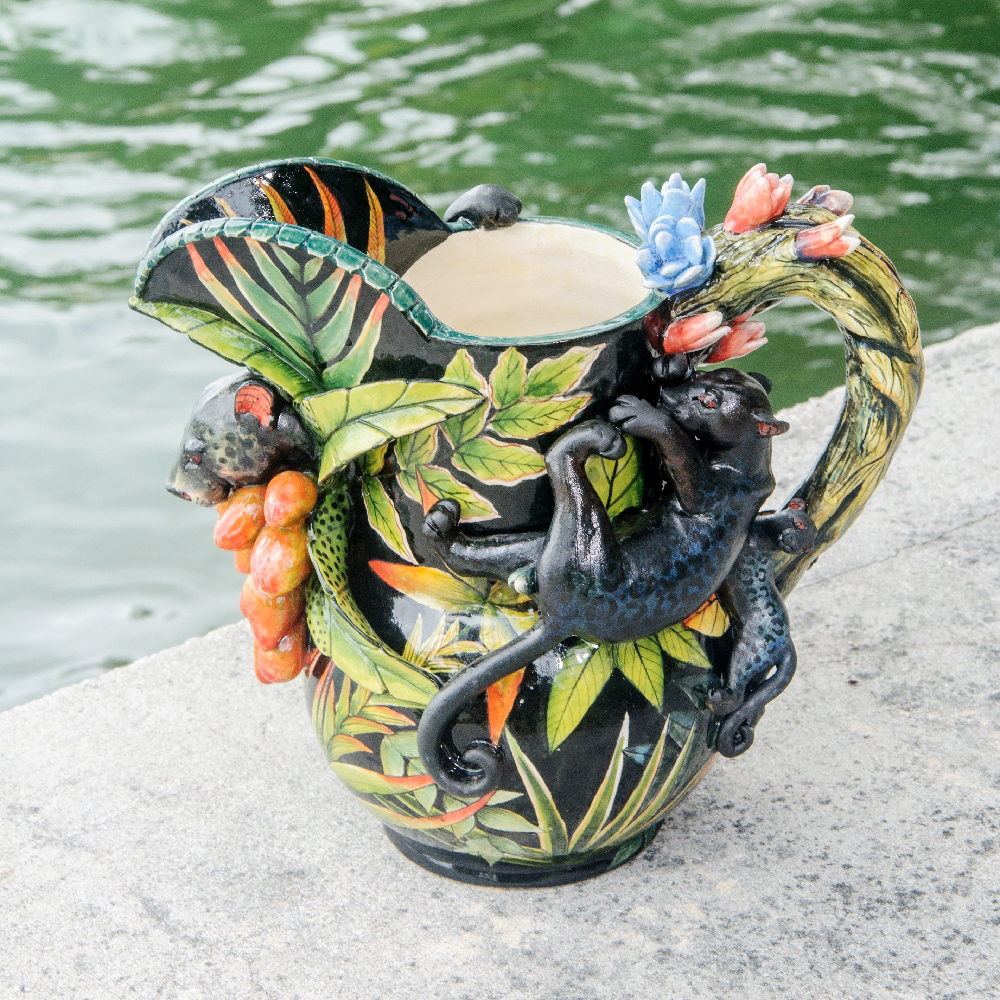
Ardmore Jaguar jug by Pomotso & Roux
Height 10 inches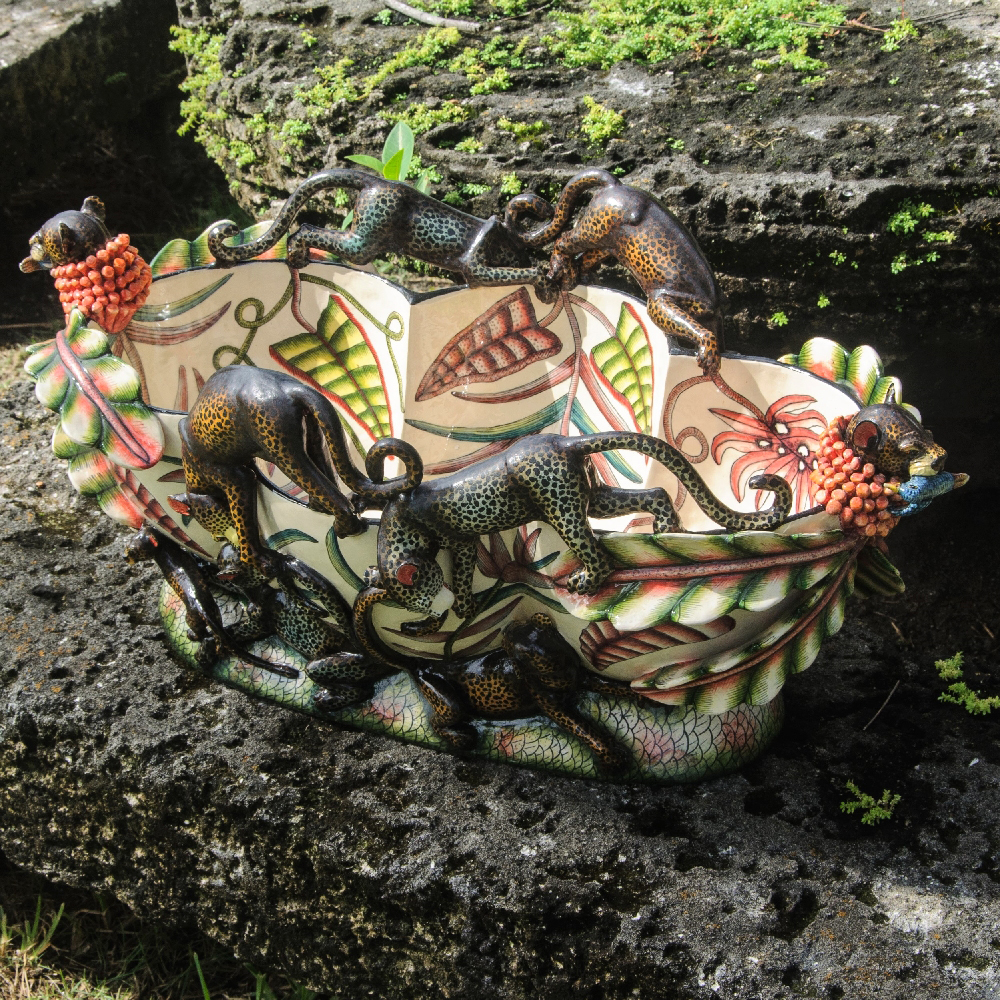
Ardmore Jaguar bowl by Pomotso & Allan
Height 12.5 inches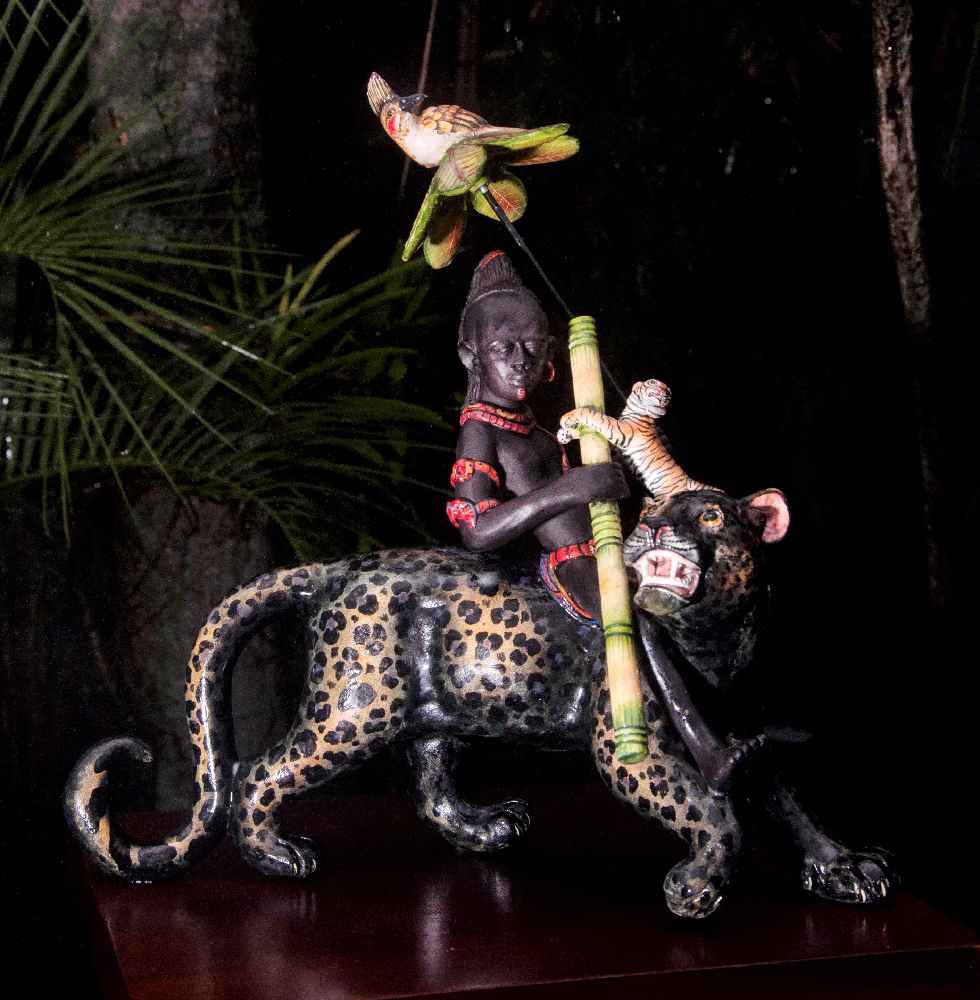
Ardmore Panther Rider by Senzo & Elvis
Height 12.5 inches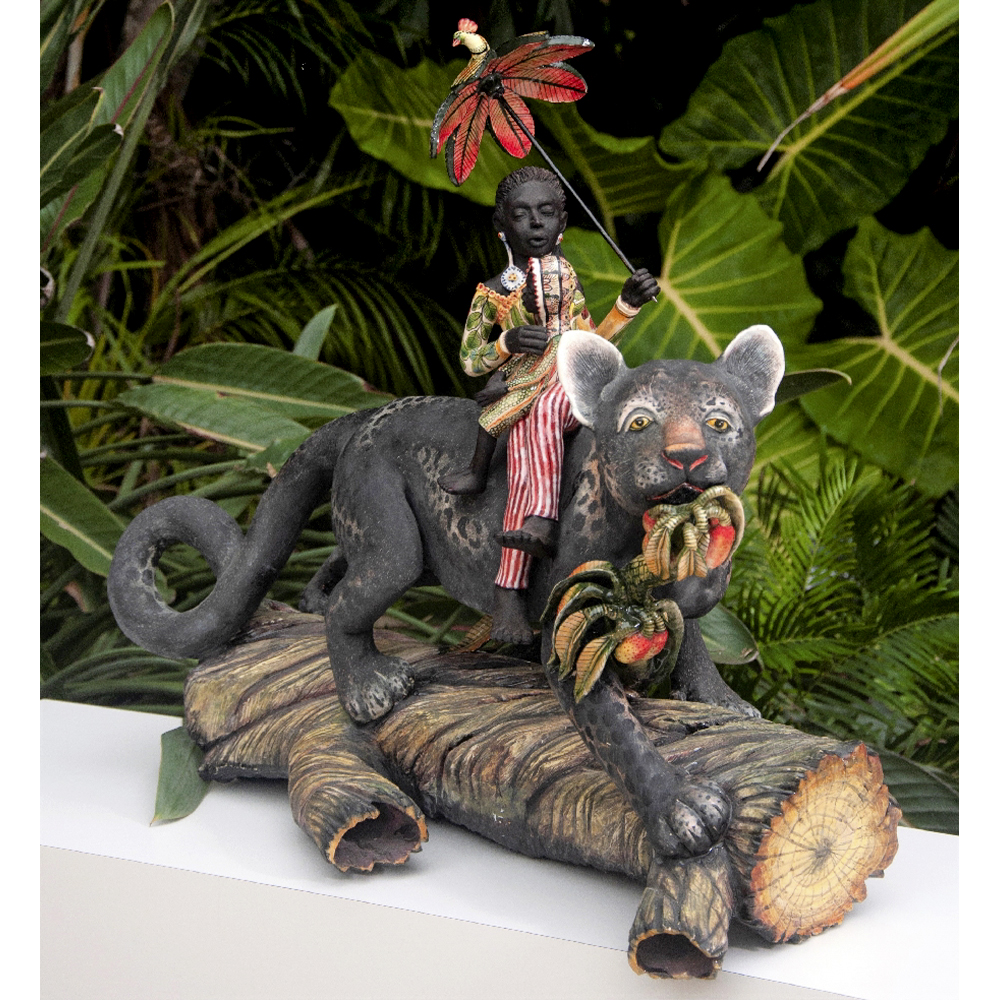
Ardmore Panther by Bennet & Siyabonga
Length 29 inches
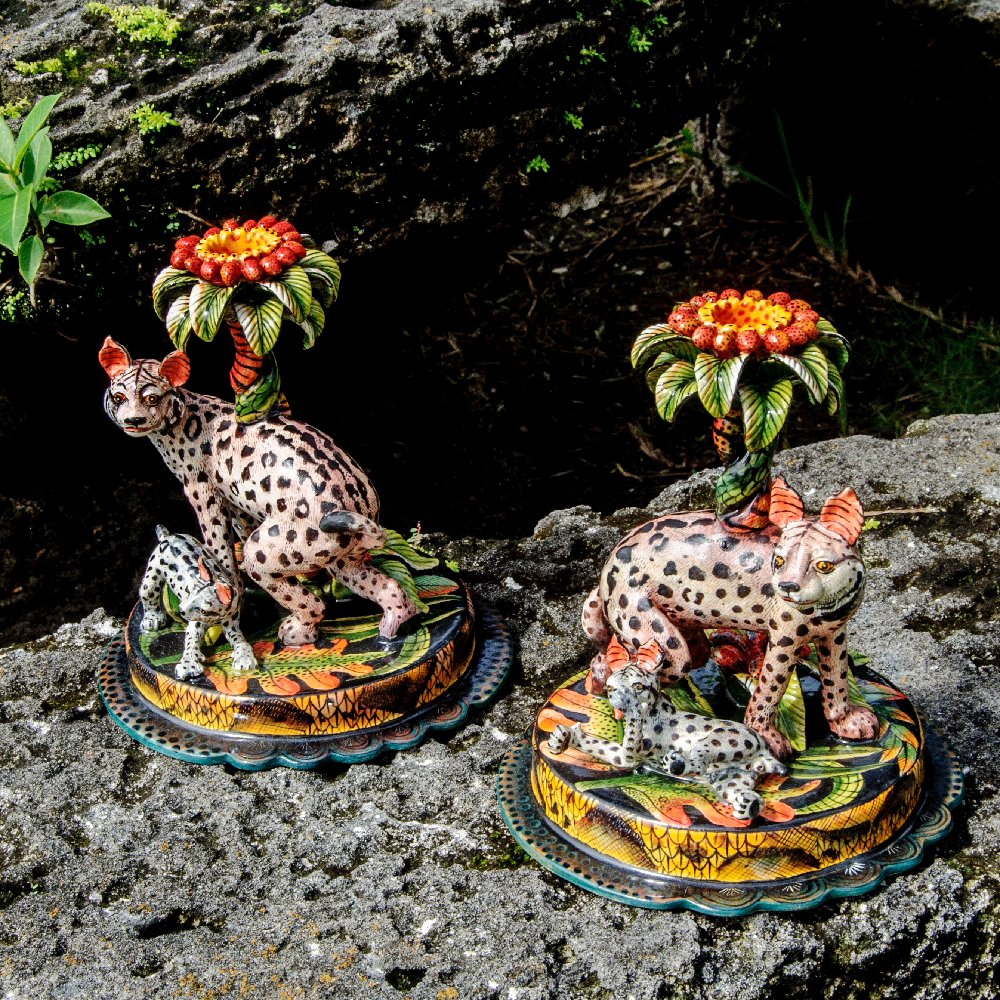
Ardmore Bobcat candle holders by Pitso & Roux
Height 9.5 inches

